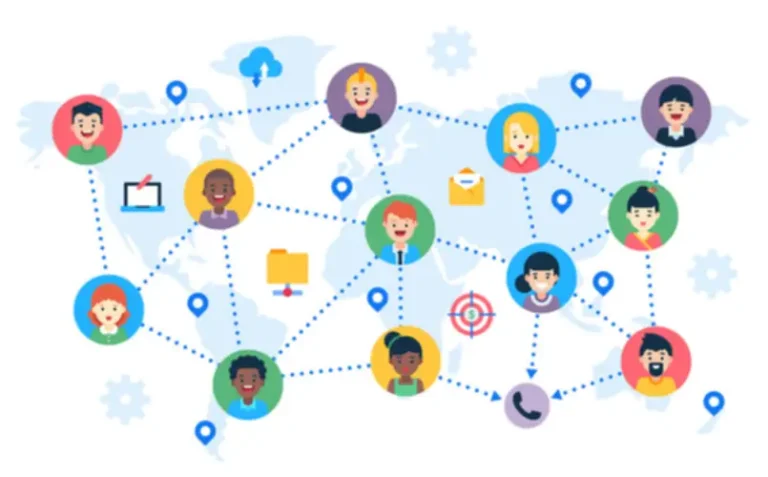However, many NoSQL databases use Javascript Object Notation (JSON), an open information interchange format that represents information as a group of name-value pairs. NoSQL databases provide quite lots of advantages, including versatile knowledge models, horizontal scaling, lightning-fast queries, and ease of use for builders. NoSQL databases come in a selection of types, together with document shops, key-values databases, wide-column shops, graph databases, and multi-model databases. These databases store data in columns, enabling customers to access only the particular columns they need without allocating extra memory on irrelevant data.
Key-value is usually a string, a number, and a completely new set of key-value pairs encapsulated in an object. Redis is an open supply, in-memory key-value data construction store, which can be utilized as a database, cache, or message dealer. Redis Enterprise is predicated on Redis open supply and is a NoSQL database but in addition contains vital performance to make it enterprise-hardened, with the inclusion of Redis help. Redis Enterprise is infinitely and linearly scalable, has 5-9s excessive availability, and may be simply geo-distributed. Column-oriented databases work on columns and are based on BigTable paper by Google. Nevertheless, we also present horizontal scaling by way of our distinctive Enterprise Cache Protocol (ECP).
What’s A Nosql Database, And How Does It Differ From Sql Databases?
Trendy functions increasingly wanted real-time processing, excessive scalability, and numerous knowledge constructions, but SQL systems struggled because of monolithic design and inflexible schemas. These challenges led to the rise of NoSQL databases—schema-less, horizontally scalable, and versatile models capable of meeting the calls for of functions like social media, e-commerce, and IoT. Understanding the types of databases is crucial for designing scalable, efficient, and reliable functions. From relational databases like PostgreSQL to NoSQL options like MongoDB and from time-series systems to graph databases, every type is optimized for a specific use case. A graph database is designed to symbolize and store data with complicated relationships utilizing structures known as nodes (entities) and edges (relationships).
This approach caches knowledge on software servers, assembly nosql database development company the demand for consumer queries through an area application server cache. This horizontal information scaling is additional streamlined through sharding to separate up your data and allow you to scale across a quantity of machines. A NoSQL database shops data in a versatile, schema-less structure, providing enhanced pace and scalability that can significantly profit your corporation. You do not always have to determine on between a non-relational and relational database schema.
To see a extra detailed model of this information modeling instance, learn Mapping Terms and Ideas From SQL to MongoDB. This curriculum introduces open-source cloud computing to a general viewers together with the talents essential to deploy functions and web sites securely to the cloud. Data replication is in all probability not instantaneous as some copies might be updated immediately whereas others in due course of time. These copies may be mutually, however in due course of time, they turn out to be consistent. Millions of people around the globe belief InterSystems with their livelihoods and even their lives.

Get Help, Community With Fellow Information Engineers, And Access Product Updates
These databases mesh really well with object-oriented programming languages, which makes them a great fit for dealing with complex knowledge setups. NoSQL is well-suited for Huge Data, particularly in IoT and social media, the place vast amounts of unstructured and semi-structured information are generated continuously. In IoT, NoSQL efficiently manages high-velocity time-series information from smart units, sensors, and other linked technologies. Similarly, social media platforms benefit AI as a Service from NoSQL’s schema-less model for managing user-generated content, including posts, comments, and multimedia. A NoSQL database, known as “not only SQL” or “non-relational,” is a system designed to retailer and handle information without the structured tables utilized in relational databases.

Every document contains key-value pairs, but unlike conventional databases, the structure of each doc can vary — making it extremely flexible for contemporary applications. Document-oriented databases retailer knowledge as JSON-like documents, making them appropriate for versatile and hierarchical information buildings. NoSQL databases are designed for horizontal scalability, meaning they’ll distribute knowledge throughout multiple nodes in a cluster to deal with large workloads and help excessive availability.
Popular use cases of doc databases embody content administration systems and consumer profiles. An example of a document-oriented database is MongoDB, the database component of the MEAN stack. A key-value database treats any information held inside it as an opaque blob; it’s up to the application to grasp how it’s structured.
- Imposing tabular constructions can lead to redundancy, data duplication, and efficiency issues at scale.
- Nonetheless, this can be problematic for complicated transactions, leading to data corruption.
- The kind of cloud storage usually used for data lakehouses is called object storage, which is both low-cost and reliable.
- The vertical scaling that’s found in other SQL databases requires including more power and reminiscence to the prevailing machine, which can be unsustainable as increasingly more storage is required.
Our data administration capabilities mixed with our dedication to full lifecycle API administration means you don’t need to abandon your present infrastructure. On the opposite hand, the doc retailer model doesn’t have the very best stage of safety. It has the next risk of information corruption, so you could need to think about another model if information safety is a concern.

When To Make Use Of A Key-value Database:
For on-line gaming, NoSQL databases deal with large volumes of player information and recreation states with low latency, enabling fast updates for real-time gameplay, multiplayer interactions, and leaderboards. This scalability ensures clean performance at the same time as player numbers fluctuate. NoSQL supports the low-latency and high-throughput calls for of chat apps, on-line gaming, and e-commerce platforms. In e-commerce, NoSQL databases handle product catalogs, user sessions, and customized recommendations, enabling rapid knowledge entry and modification with out efficiency delays. With a schema-less setup, NoSQL allows varied knowledge varieties and constructions throughout the identical database. Relational databases like MySQL or PostgreSQL are greatest for structured data with well-defined schemas and relationships.
Attempt InterSystems IRIS free of charge and experience how your corporation can thrive with a database management system that excels in performance at scale, availability, and security. InterSystems IRIS offers you with cutting-edge NoSQL databases to ensure you’re utilizing your information to its peak efficiency. After storing your information as quickly as, you’ll be in a position to arrange your knowledge across documents, tables, vectors, objects, keyvals, and extra. InterSystems IRIS helps columnar storage, permitting knowledge to be saved in columns somewhat than rows. This approach can significantly enhance question performance, especially for analytical workloads.
Web functions depend on NoSQL databases to effectively handle consumer sessions, making certain a responsive consumer experience even beneath heavy site visitors loads. For decades, the predominant information model in utility improvement was the relational information mannequin that saved knowledge in tables manufactured from rows and columns. Structured Query Language (SQL) was used to create and edit these relational tables. The rows in the desk represent a collection of related values of 1 object or entity.